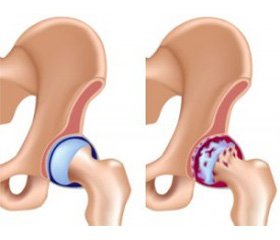Журнал «Боль. Суставы. Позвоночник» 2 (18) 2015
Вернуться к номеру
Efficiency of Physiotherapy in Treatment of Severe Pain Syndrome in Elderly Patients with Coxarthrosis
Авторы: Bakalyuk T.G., Mysula I.R., Kvasnitska O.S., Salayda I.M. - Ternopil State Medical University named after I.Ya. Gorbachevsky, Ternopil, Ukraine
Рубрики: Ревматология, Травматология и ортопедия
Разделы: Медицинские форумы
Версия для печати
Статья опубликована на с. 83
Introduction. Successful treatment and rehabilitation of patients with osteoarthritis remains an important medical, social and economic problem for today. Pain is one of the most burdensome feelings that determines the severity of suffering and changing the quality of patients’ life. Therefore, purposeful therapy is a priority in patients with оsteoarthritis. In elderly people reducing of life expectancy depends on the intensity of pain more than the presence or absence of threatening the life diseases. Severity of pain does not always correspond to the degree of inflammation and radiological changes in the joints. It was investigated that the effect of acupuncture on bone receptors has a 20 times greater therapeutic effect than the impact on skin receptors, and the electricity is the best stimulus for bone receptors. Therefore, we used the method of osteoperiosteal electrical stimulation to affect the subchondral part of bone.
Aim — to investigate the effectiveness of osteoperiosteal electrical stimulation in elderly patients with coxarthrosis with chronic pain.
Materials and methods. Under our supervision there were 36 patients (age 64.48 ± 0.71 years) with osteoarthritis of the hip joints II clinical radiological stage, functional insufficiency of joints second stage. Criteria for inclu–ding: age of patients over 60 years, the level of pain on a visual analogue scale (VAS) at least 60 mm. Continuous dull night joint pain or constant aching pain round the clock was the main complaint of patients. Periarticular bone structures’ pain observed on palpation. Patients were divided into 2 groups: a control group (n = 16) used traditional complex treatment; main group of patients (n = 20) in addition to the standard treatment received osteoperiosteal electrical stimulation (sterile needle supplied to painful on palpation of bone structures; the influence of high–frequency pulse current on periosteal receptors damaged joint was performed through a needle for 20 minutes. Amperage picked focusing on «light» patient’s feeling. Treatment course depend on the number of affected joints and consists of 5–8 procedures.
Results. Complex clinical, laboratory and instrumental studies were conducted all patients before treatment and after 10 days. Questionnaire to determine Lequesne index was used, and also determining the speed of walking and range of motion in the joints. After analyzing the research data obtained the following results: indicators of pain on a VAS–scale reduced to 27.5 ± 0.6 in the main group, in the control group to 49.3 ± 0.8. It was also observed an increase in range of motion in the hip joint and speed walk in the main group. Significant changes in these parameters were not observed in the control group.
Conclusion. Studies have shown that exposure to low–frequency pulse current to the subchondral part of bone have pronounced analgesic effect, relieve spasms periarticular structures and enables more accurately rehabilitation.

